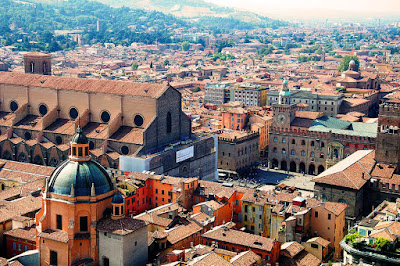City Countryside and Regional Itineraries
Travel Programs
for families, schools and theme groups with educational workshops, food and wine
tasting and visits to museums, medieval villages, nature parks and archaeology
sites.
Abruzzo is located on the
Adriatic Coast, east of Rome. It is home to national parks, hilltop medieval
and Renaissance towns and numerous nature reserves. The Apennine mountain chain
forms much of its interior while the coastal plain has sandy beaches and dunes.
Basilicata, also known as Lucania, is a southern Italian
region bordering with Campania to the west, Apulia to the north and east, and
Calabria to the south, with one coastline on the Tyrrhenian Sea between
Campania and Calabria, and a longer one in the Gulf of Taranto on the Ionian
Sea.
Campania the ancient Romans called it Campania Felix. Baia, Puteoli, Pompeii,
Stabia and Capri were their favorite destinations. Then and now, Happy Campania
is famed for its ancient ruins, coastal resorts and world-renowned culinary
traditions. A cultural and national capital for much of its nearly
three-thousand-year history, Naples is home to art museums, the San Carlo opera
house and a spectacular bay framed by Mt. Vesuvius, affectionately and
fearfully referred to by the local inhabitants as The Monster.
Lazio - Latium is mainly flat and hilly, with small mountainous areas in
the eastern and southern districts. The coastline is mainly composed of sandy
beaches. Behind the coastal strip, to the north, lies the coastal plain of
Maremma Laziale. The center is occupied by the Roman countryside, a vast
alluvial plain surrounding the city of Rome, and the south is characterized by
flatlands. The Apennines of Latium are marked by the Tiber River valley and
three mountains of volcanic origin whose craters are occupied by Lakes Bolsena,
Vico and Bracciano. South of the Tiber, the Alban Hills, are of volcanic
origin.
Reduce Transit Times and Travel Cost on Your Next Trip
Marche is slowly being
discovered as the new Italian frontier; an abridged expression of the varied
charms of Italy with a variety of attractions offered seasonally and year-round,
including: authentic foods, breathtaking landscapes, a lively cultural
landscape, artistic and natural treasures.
Puglia borders the Adriatic Sea in the east, the Ionian Sea
to the southeast, and the Strait of Otranto and Gulf of Taranto in the south.
Its southernmost portion, the Salento peninsula, forms a high heel on the boot
of Italy.
Veneto Venice is
comprised of 118 islands intersected by 150 canals and linked by 400 bridges. Among the neighborhoods to
choose for your visit: Cannareggio – Ghetto, Santa Croce, Miracoli, San Zanipolo,
Rialto, Frari, Dorsoduro, Giudecca and Castello. This incomparable
city is full of secret campos, Gothic palazzos and neighborhood wine bars. San
Marco square with its bell tower and the Doge’s Palace, the Grand Canal
surrounded by Venetian style palaces, numerous art galleries and boutiques.
Emilia-Romagna Bologna Modena Ferrara and Dozza. Arrival and private transfer from the
Bologna airport or train station to a Farmhouse in the countryside. Lunch and
guided tour of the city center. Dinner with typical dishes from Emilia. The
Food Valley full day excursion and visit to some of the best Emilia food
producers:
Langhirano -
Prosciutto di Parma production plant and food tasting
Reggio Emilia -
Parmigiano Reggiano Dairy with explanation of the production cycle
Modena – Acetaia
(vinegar loft) and the aging process of traditional balsamic vinegar.








